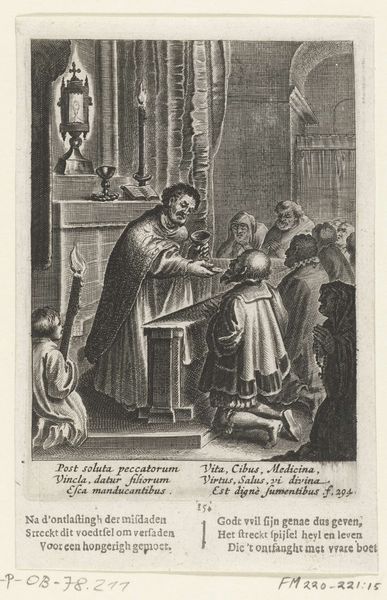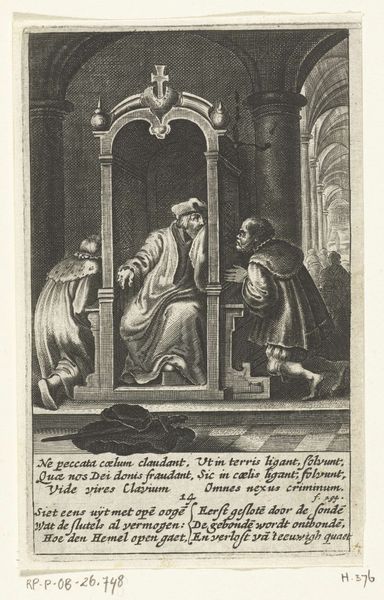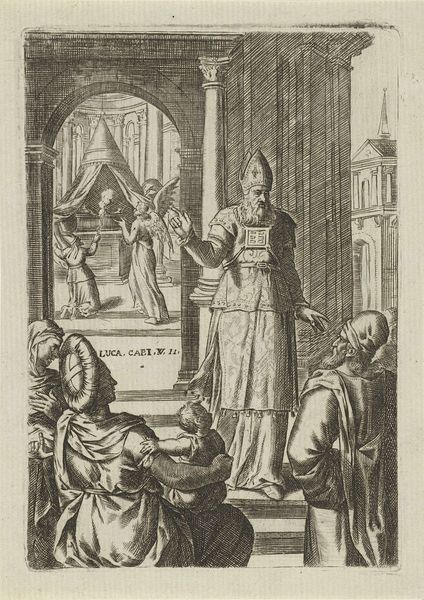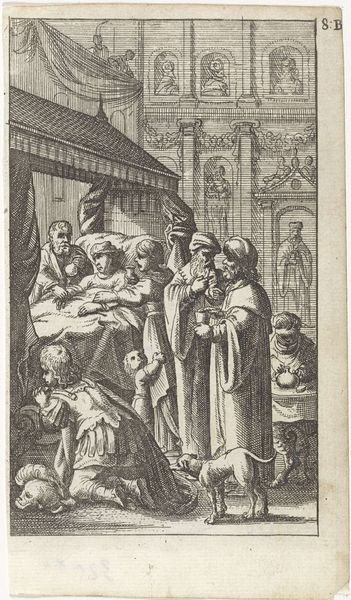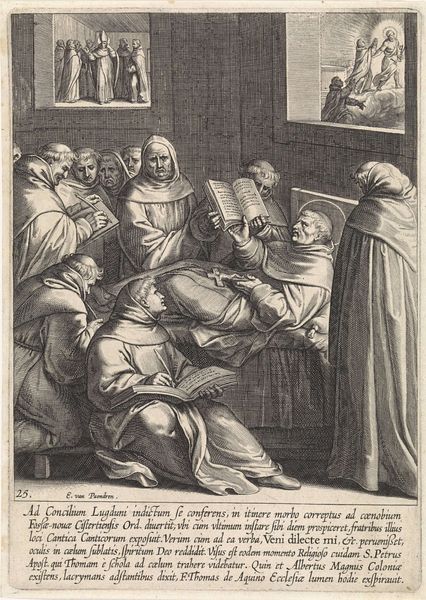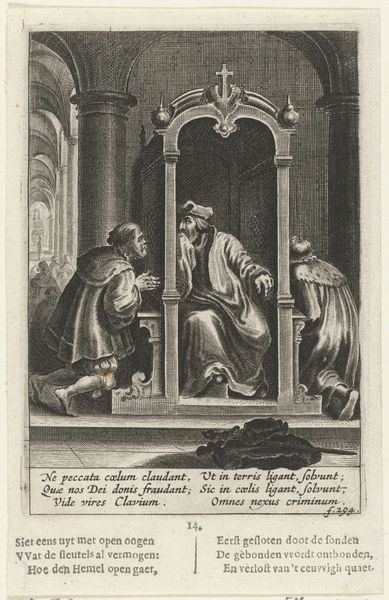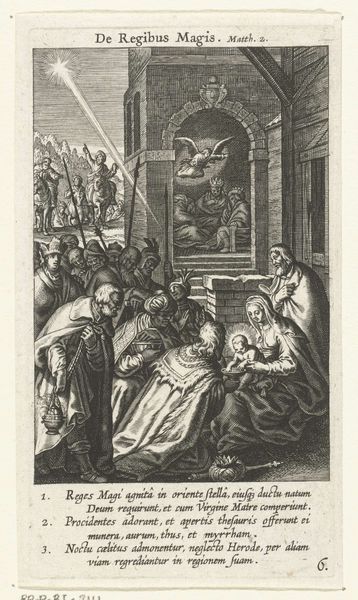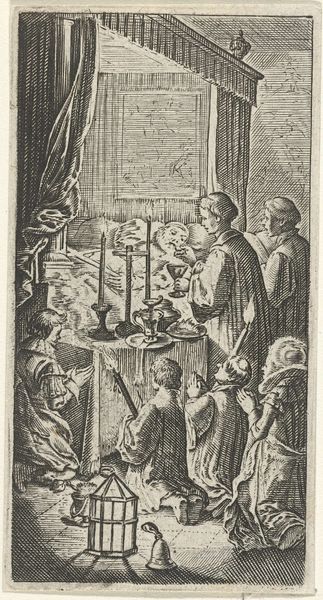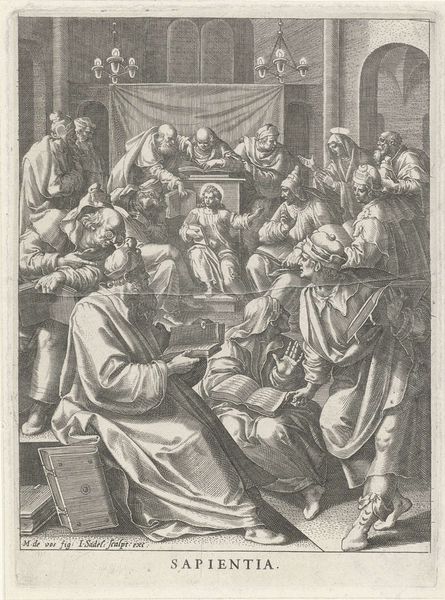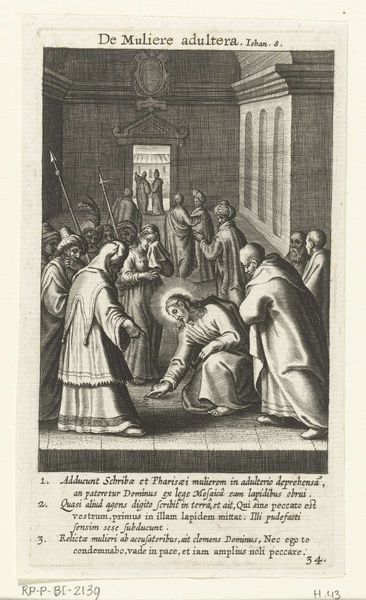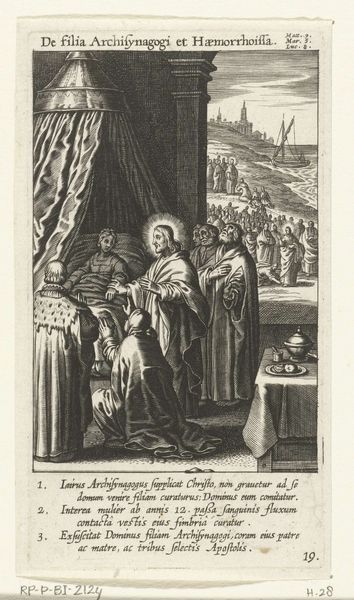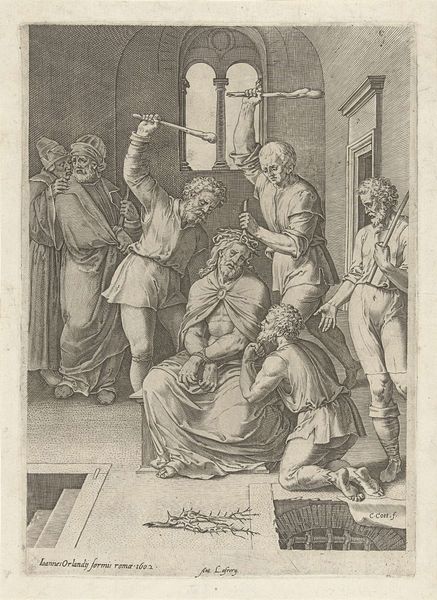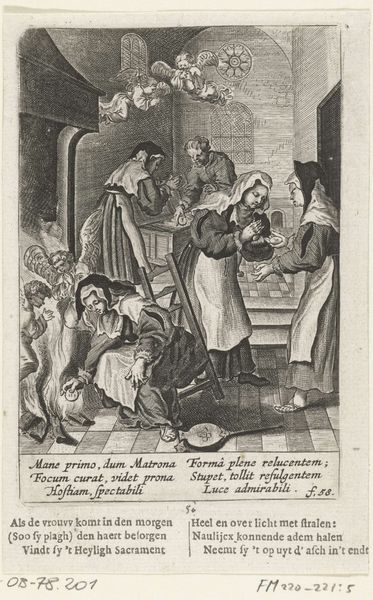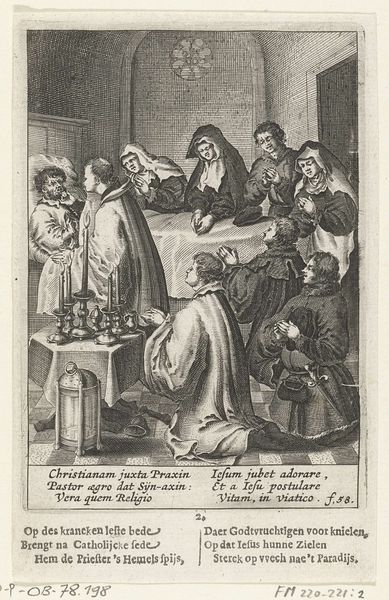
print, engraving
#
baroque
# print
#
old engraving style
#
figuration
#
line
#
history-painting
#
engraving
Dimensions: height 133 mm, width 83 mm
Copyright: Rijks Museum: Open Domain
This print of a priest administering communion was made with engraving by Boëtius Adamsz. Bolswert. The process involves using a tool called a burin to incise lines directly into a metal plate, which is then inked and printed. Notice the incredible amount of hand work this requires. Each line, carefully considered, contributes to the image's detail, from the folds of the priest's robes to the expressions on the faces of the communicants. The material qualities of the print – its black lines on white paper, the texture created by the engraved lines – give it a graphic intensity. Yet, it also speaks to the social context of its creation. The labor-intensive nature of engraving meant that prints like this were relatively expensive, making them accessible primarily to a privileged audience. Considering the materials, processes, and social context of this print allows us to appreciate the craftsmanship involved. It also challenges the traditional art history, showing how this work reflects the economic realities of its time.
